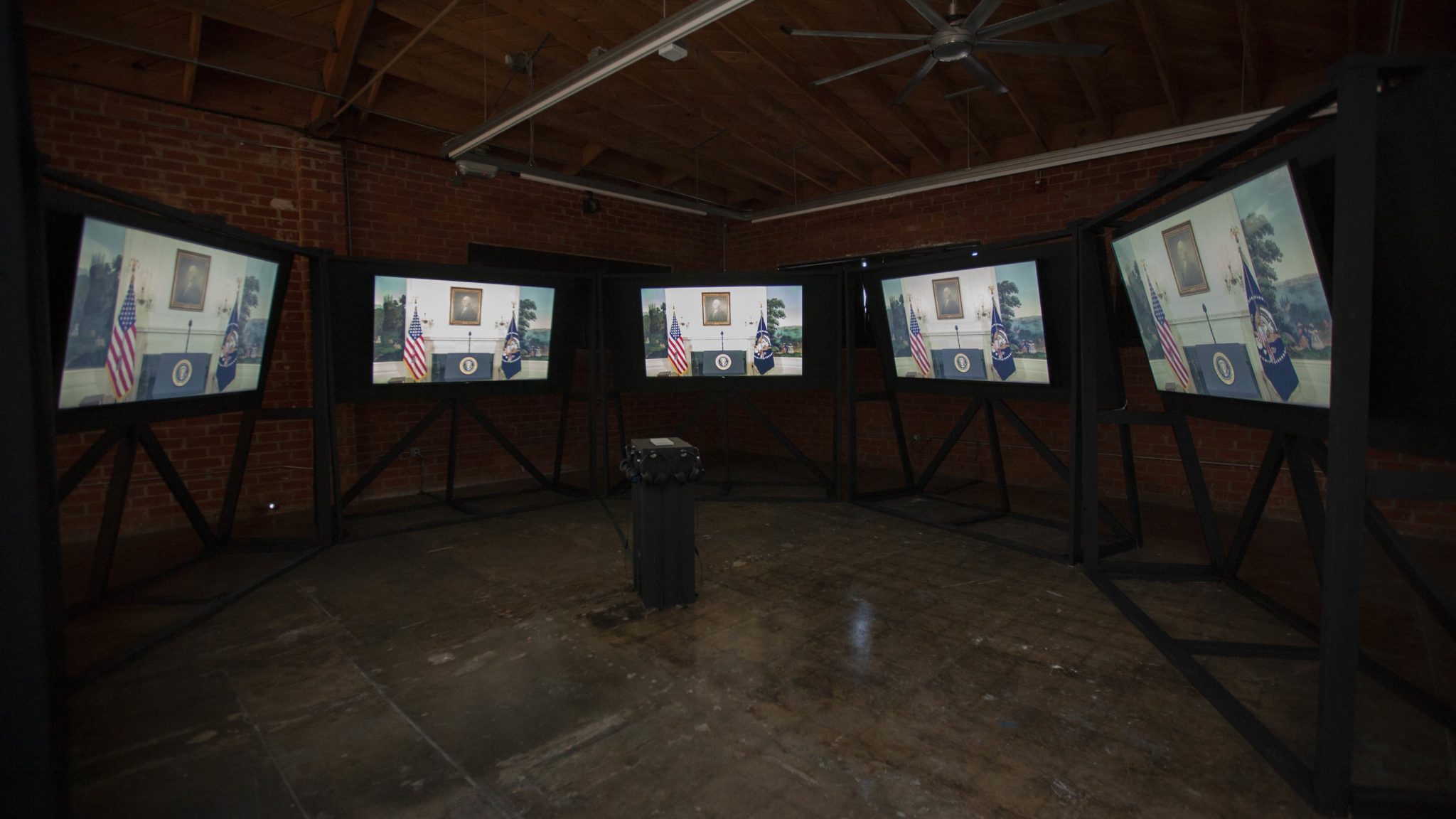Codi Barbini’s immersive six-channel video installation The Executive Condolence carefully montages excerpts from presidential addresses in response to mass shootings spanning the last thirty years. Barbini selects portions of clips from speeches by President Bill Clinton, George W. Bush, Barack Obama, and Donald Trump, crafting them into a narrative sequence that does not follow a chronological trajectory, but rather weaves together and overlaps related fragments culled from official responses to these seemingly never-ending tragedies.
Barbini’s installation brings to mind the works of Robert Heineken, Omer Fast and Christian Marclay, artists who also gravitated toward appropriation, mining the media for subject matter, manipulating this content for their own ends. In 2002, Omer Fast created CNN Concatenated, a video work that collaged together single words from hundreds of hours of CNN newscasts. Fast took the images and voices of many different presenters out of context, rearranging the now connected fragments as a new monologue that was at once spot on and a complete fiction. Christian Marclay’s 24-hour movie The Clock, as well as his installations Video Quartet and War Movies were created by montaging appropriated scenes from films so that ‘the media’ became both the form and the content of the work.

Installation view
Barbini’s interest in mass shootings stems from personal experience and the shock of an active shooter at her cousin’s high school. For the feature film, The New Normal she followed five students who survived the Marjorie Stoneman Douglas High School incident in Parkland, Florida from 2018. While this film documents the aftermath and effects on the students as they finish the school year, Barbini also became interested in the proliferation of school shootings and how they were presented via the news media, as well as how American Presidents publicly addressed the nation in the aftermath.
Using clips from the official White House broadcast channel, C-Span and other public TV stations, The Executive Condolence weaves together a chilling narrative of loss, outrage, sadness, exasperation and lack of understanding. The sequence begins with the president approaching the podiums, greeting the public— with my fellow Americans— then addressing the specifics of the tragedy. As the images flow from screen to screen, sometimes coalescing, sometimes repeating and sometimes fading to black becoming the White House logo, the viewer’s eyes circle the monitors trying to keep pace with the narrative. The screens like the speeches pause, before speeding up, continuing with a bombardment of platitudes expressing disbelief while simultaneously trying to assure audiences that things are under control.
What is surprising about Barbini’s collective narrative is how similar these different presidential personalities become when they express grief and try to calm the nation. As their cadences merge, their vulnerability becomes evident. The voice of authority and power is uncertain. He cannot prevent, or even understand what prompts these mass shootings. Through the sequence of official speech, the Presidents offer prayer and sympathy. They gaze out across the television screen trying to connect. Sometimes they shed a tear or hesitate, unable to find the right word to express the deepness the wound. As the images ebb and flow around the six monitors that encircle the viewer, the repetition becomes evident. Which President says what hardly matters: what remains is the collective recurring experience and the wonder as to why.
Codi Barbini
The Executive Condolence
January 25 – April 5, 2020



















A worthy try at an absolutely unacceptable fact that has almost inexplicably avoided even an iota of change! Almost the whole world is aghast, as it is very likely to be when “Covid-19” rolls across the wealthiest nation by far on Earth… BUT wealthiest, maybe not for long! And who have they got to blame… NO ONE!!